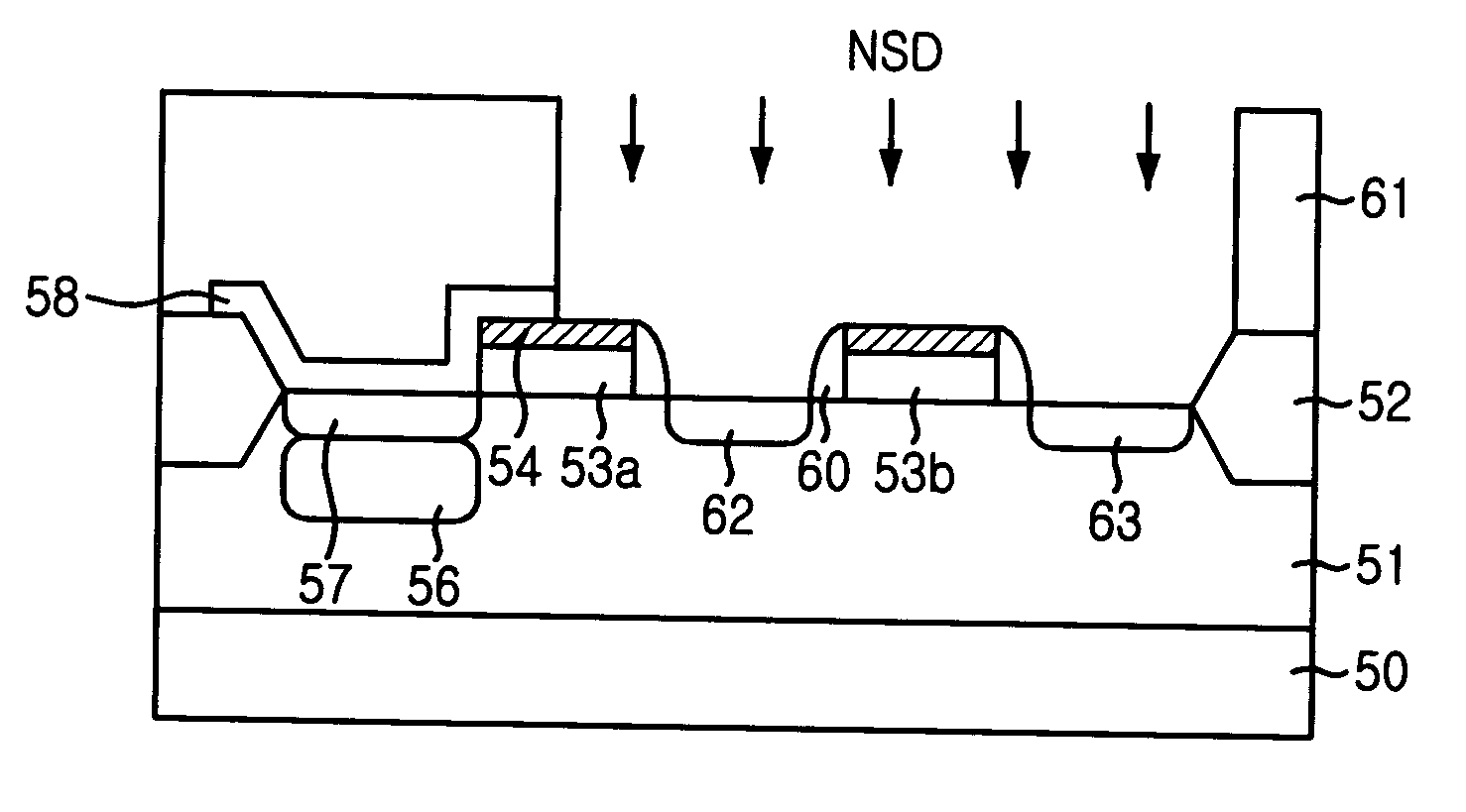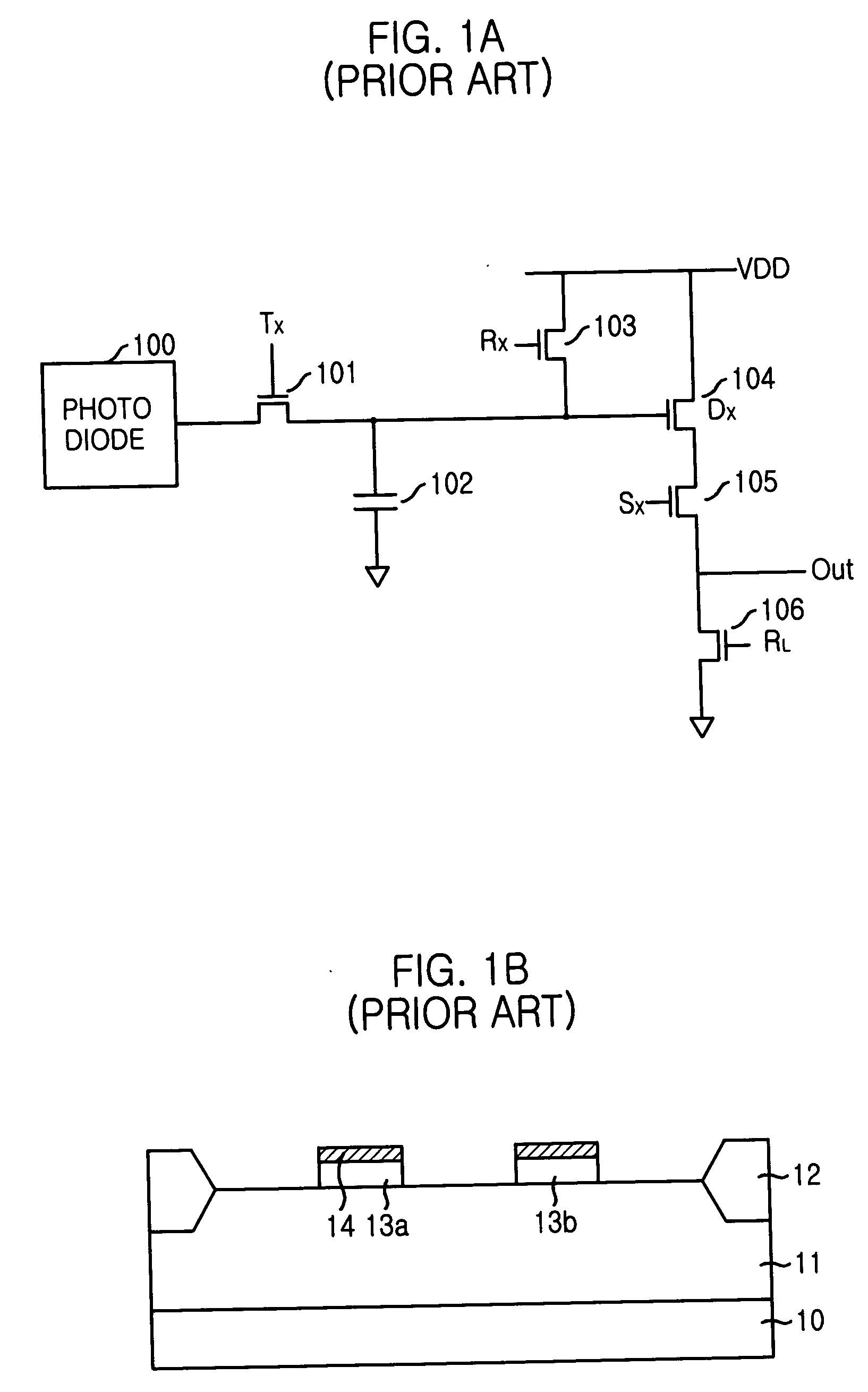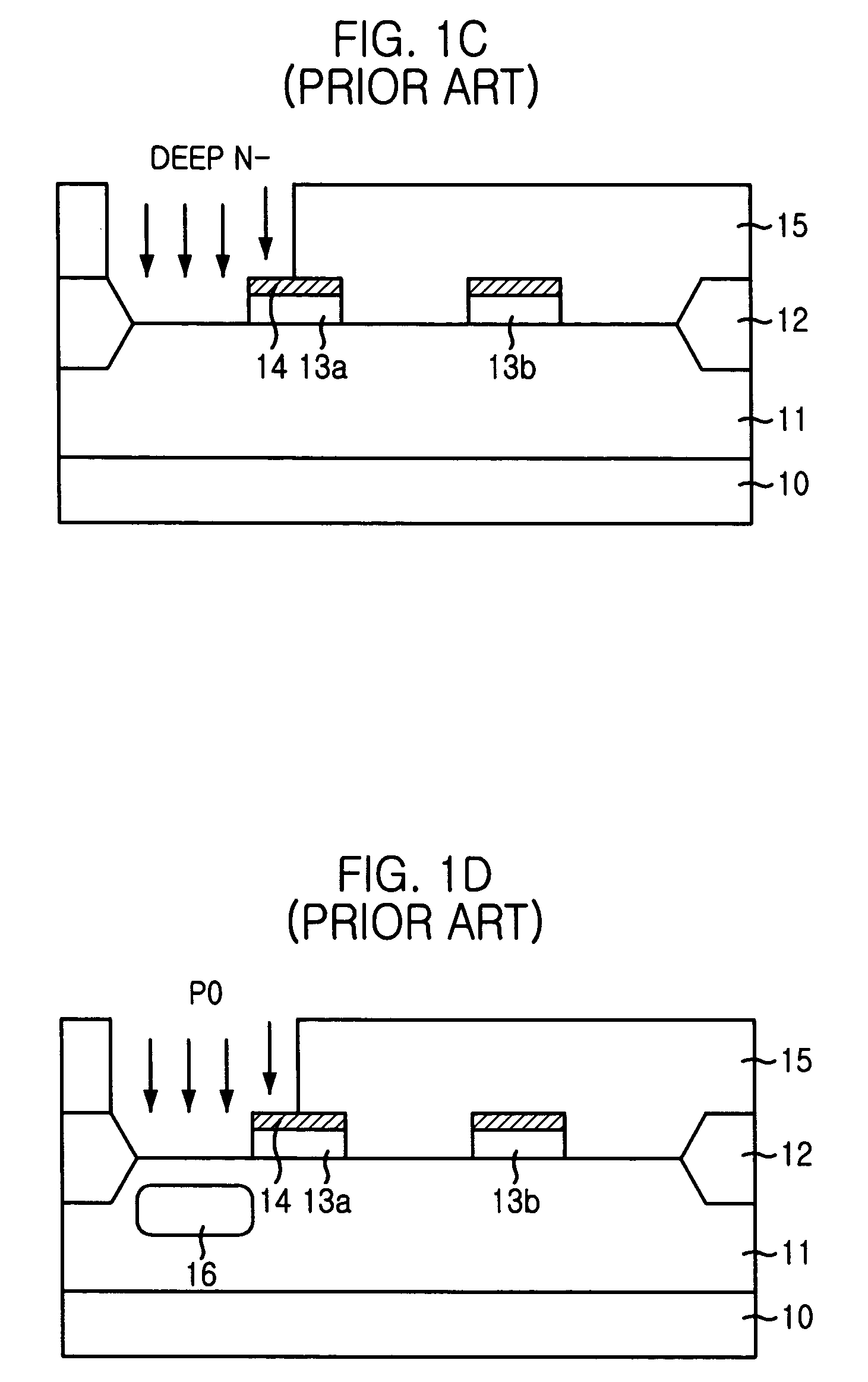Method for manufacturing CMOS image sensor using spacer etching barrier film
a technology of cmos image sensor and spacer, which is applied in the field of method for fabricating cmos image sensor, can solve the problems of limiting the effect of these efforts, defects in crystal lattice structure, and dark current, and achieve the effect of reducing dark current and improving the optical properties of short wavelength ligh
- Summary
- Abstract
- Description
- Claims
- Application Information
AI Technical Summary
Benefits of technology
Problems solved by technology
Method used
Image
Examples
Embodiment Construction
[0025] FIG. 2A through 2F are cross-sectional views of disclosed manufacturing process of a CMOS image sensor with emphasis on the transfer transistor and reset transistor.
[0026] First, a lightly doped p-type epitaxial layer 31 is formed on the heavily doped p-type substrate 30 as shown on FIG. 2A. This combination is used because the lightly doped epitaxial layer 31 improves the performance characteristics by increasing the depth of the depletion layer, and the heavily doped substrate 30 prevents crosstalk between unit pixels.
[0027] Next, a component isolator 32 is formed on some area of the epitaxial layer 31. In an embodiment, a field oxide using thermal oxide can be used as component isolator, however, it is possible to use trench structure as a component isolator.
[0028] Next, the gates of the transfer transistor 33a and the reset transistor 33b are formed on the active area by depositing gate oxide (not shown), gate polysilicon 33, and tungsten silicide 34 and by patterning the...
PUM
 Login to View More
Login to View More Abstract
Description
Claims
Application Information
 Login to View More
Login to View More - R&D
- Intellectual Property
- Life Sciences
- Materials
- Tech Scout
- Unparalleled Data Quality
- Higher Quality Content
- 60% Fewer Hallucinations
Browse by: Latest US Patents, China's latest patents, Technical Efficacy Thesaurus, Application Domain, Technology Topic, Popular Technical Reports.
© 2025 PatSnap. All rights reserved.Legal|Privacy policy|Modern Slavery Act Transparency Statement|Sitemap|About US| Contact US: help@patsnap.com



